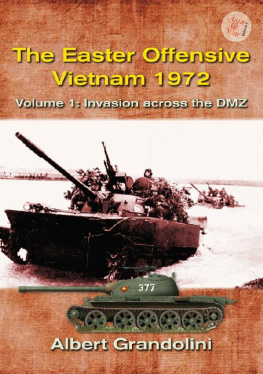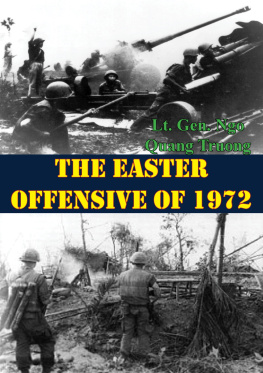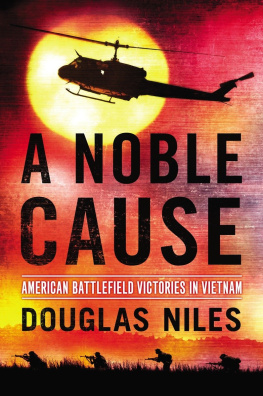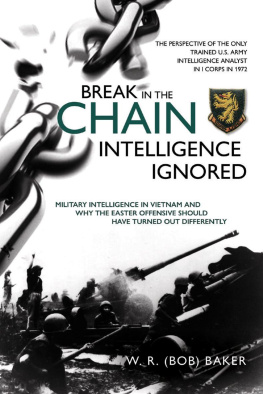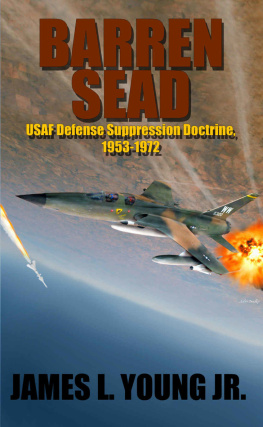Also by Albert Grandolini in the Asia@War series:
The Easter Offensive Vietnam 1972. Volume 2: Tanks in the Streets
Published in 2015 by:
Helion & Company Limited
26 Willow Road
Solihull
West Midlands
B91 1UE
England
Tel. 0121 705 3393
Fax 0121 711 4075
email:
website: www.helion.co.uk
Twitter: @helionbooks
Visit our blog http://blog.helion.co.uk/
Text Albert Grandolini 2015
Photographs as individually credited
Color profiles Tom Cooper 2015
Maps Helion & Company Limited. Drawn by George Anderson
Designed & typeset by Farr out Publications, Wokingham, Berkshire
Cover design by Farr out Publications, Wokingham, Berkshire
ISBN 978-1-910294-07-9
eISBN 978-1-912174-28-7
Mobi ISBN 978-1-912174-28-7
British Library Cataloguing-in-Publication Data
A catalogue record for this book is available from the British Library
All rights reserved. No part of this publication may be reproduced, stored, manipulated in any retrieval system, or transmitted in any mechanical, electronic form or by any other means, without the prior written authority of the publishers, except for short extracts in media reviews. Any person who engages in any unauthorized activity in relation to this publication shall be liable to criminal prosecution and claims for civil and criminal damages.
Cover: The offensive across the DMZ was spearheaded by two armored regiments. These Type 63s from the 66th Battalion of the 202nd Armored Regiment swim across the Ben Hai River on the eastern part of the DMZ. (PAVN); T-54B number 391 of the PAVN 203rd Armored Regiment, northwest of Dong Ha, April 1972 (color profile).
Note: In order to simplify the use of this book, all names, locations and geographic designations are as provided in The Times World Atlas , or other traditionally accepted major sources of reference, as of the time of described events.
CHAPTER 1
THE ORIGIN OF THE CAMPAIGN
The aftermath of the communist Tet Offensive in 1968 brought with it a change of resolve in Washington for a long-drawn war in Vietnam. Even if the local Viet Cong forces and its administrative infrastructure had been badly defeated, the US was mired in a strategic stalemate with North Vietnam as they had shown no sign of abandoning the objective of imposing communist rule in the South.
An increasing percentage of American public opinion now openly questioned the reason for fighting there and in view of this in 1969 the United States initiated its Vietnamization policy in South East Asia. The ever-increasing public sentiment further led the new Richard Nixon administration to call for a highly forceful approach to the policy so that South Vietnamese President Nguyen Van Thieu assumed greater responsibility for the war-effort. The devised scheme called for a massive upgrade of South Vietnamese military capacity whilst gradually reducing the number of US troops deployed in the field. Four years into this policy, significant results were witnessed in South Vietnam, with 47,000 guerrillas that had ralllied the government in 1969, and 32,000 in 1970, a trend that continued the following year. Even if one is cautious using Vietnam War statistics due to different collation methods, by early 1972 guerrilla activity in the countryside was at its lowest ebb for decades. The Viet Cong had also not been able to recover from the losses suffered during the Tet Offensive and the heavy fighting of 19691970. Its underground administrative network had also been badly weakened by Operation Phoenix coordinated by the CIA, where between 26,00041,000 suspected enemy civilians were ruthlessly executed. The rural economy was now also recovering thanks to massive US economic aid and an agrarian reform program initiated by Saigon. US advisors attached to the pacification campaign repeatedly indicated that the situation was steadily improving, with most of the South Vietnamese peasants rejecting the Viet Cong and people showing no real enthusiasm for the corrupt regime.

